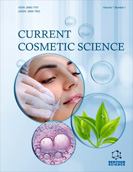Abstract
Background: The process of wound healing is a complicated series of organized biochemical and cellular phenomena that restore the integrity of the skin and subcutaneous tissue. A drug molecule can be transported to the site of action through a variety of carriers, including niosomes or non-ionic surfactant vesicles. They can trap medications that are both hydrophilic and hydrophobic. It has been demonstrated that curcumin has strong analgesic, anti-inflammatory, and wound-healing qualities.
Methods: In the current study, an effort has been made to create a curcumin-loaded niosomal gel for efficient wound healing therapy. Utilizing non-ionic surfactants (Span 60, Span 20, Tween 20, and Tween 60) and cholesterol at various concentrations, a modified thin-film hydration process was used to create niosomal gels containing curcumin. Particle size, shape, entrapment effectiveness, deformability, and in vitro skin penetration were used to describe the vesicles. The 1% carbopol 940 gel was then made using the improved formulation. In wound-induced rats, the effectiveness of the in vivo wound healing was assessed.
Results: The manufactured niosomes were discovered to be homogeneous in size and spherical in shape. According to the IR spectrum study, the medication and formulation additives did not interact. It was discovered that the niosomal gel (S-3) loaded with curcumin was not irritating to the skin. According to studies on in vivo wound healing, curcumin-loaded niosomal gel exhibited the highest percentage of wound contraction. Following 21 days of niosomal gel treatment, the histopathological evaluation found a noticeable improvement in the skin's histological architecture. Curcumin-loaded niosomal gel was easily made using the thin film hydration process.
Conclusion: The results of this study demonstrate the potential of niosomal gel as a cutting-edge therapeutic strategy for wound healing.
[http://dx.doi.org/10.1007/s00109-004-0555-y] [PMID: 15175863]
[http://dx.doi.org/10.1016/j.jep.2005.11.033] [PMID: 16473486]
[http://dx.doi.org/10.1556/ABiol.56.2005.3-4.16] [PMID: 16196208]
[http://dx.doi.org/10.1161/CIRCULATIONAHA.105.595793] [PMID: 16534006]
[PMID: 11469188]
[http://dx.doi.org/10.3109/10717544.2013.838077] [PMID: 24156390]
[http://dx.doi.org/10.1006/phrs.1998.0404] [PMID: 10051376]
[http://dx.doi.org/10.1016/j.jddst.2020.102035]
[http://dx.doi.org/10.1016/j.lfs.2014.08.016] [PMID: 25200875]
[http://dx.doi.org/10.1016/S0039-6109(05)70486-2] [PMID: 8782479]
[http://dx.doi.org/10.1177/1558689807299526]
[http://dx.doi.org/10.1016/j.ijpharm.2010.03.064] [PMID: 20381599]
[PMID: 15088683]
[http://dx.doi.org/10.1002/ijc.20668] [PMID: 15514944]
[http://dx.doi.org/10.1002/(SICI)1099-1573(199906)13:4<318::AID-PTR445>3.0.CO;2-7] [PMID: 10404539]
[http://dx.doi.org/10.1007/s00403-014-1474-6] [PMID: 24895176]
[http://dx.doi.org/10.1111/j.2042-7158.1986.tb04623.x] [PMID: 2875149]
[http://dx.doi.org/10.1021/jf0603533] [PMID: 19127718]
[http://dx.doi.org/10.1097/00005373-198907000-00011] [PMID: 2664203]
[http://dx.doi.org/10.3233/JAD-2004-6403] [PMID: 15345806]
[http://dx.doi.org/10.4103/0972-124X.82264] [PMID: 21772719]
[http://dx.doi.org/10.1007/s001130050483] [PMID: 10525624]
[http://dx.doi.org/10.1023/A:1011037527889] [PMID: 11465422]
[PMID: 32226345]
[http://dx.doi.org/10.1186/1472-6882-6-10] [PMID: 16545122]








